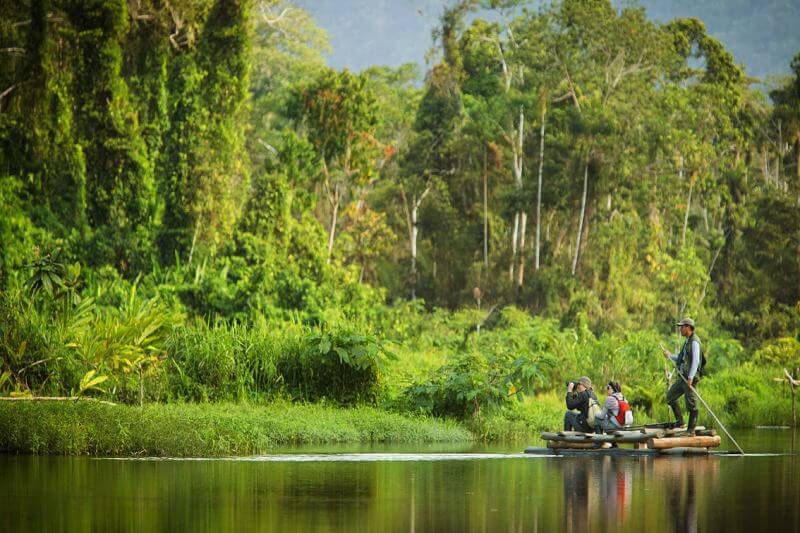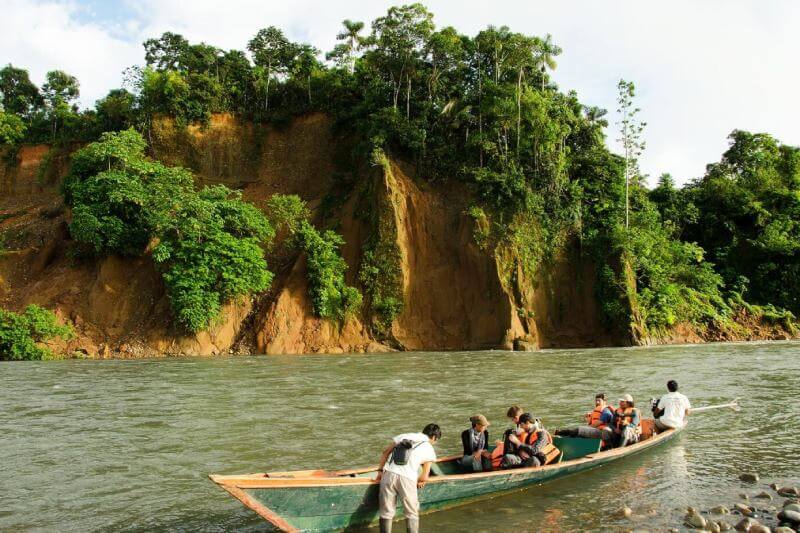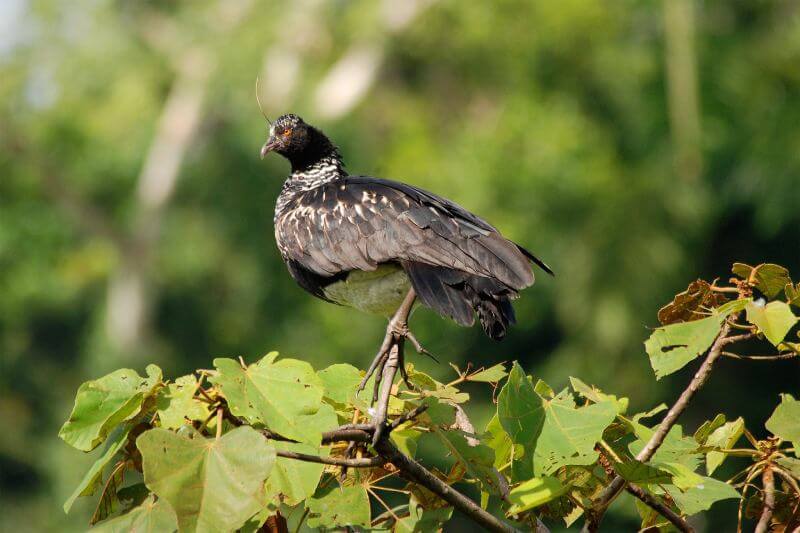Manu National Park, the famous reserve of biodiversity. Established in 1973, it spans over 2 million hectares. The founding of Manu allowed, for half a century now, to protect and discover key aspects of the Amazon.
The park’s founding was a monumental step for conservation. It aimed to protect diverse ecosystems and indigenous cultures. Today, it stands as a testament to sustainable preservation.
Manu National Park’s story is as rich as its landscape. It reflects the global shift towards environmental awareness. Join us as we explore its origins and impact before your next visit.
The Amazon houses the Manu National Park and countless conservation efforts. Its founding marked a pivotal moment in environmental history. The founding of Manu National Park was not just an act of preservation but a commitment to the future.
In 1973, Peru took a groundbreaking step by establishing this national park. They aimed to safeguard the rich tapestry of flora and fauna nestled within. Spanning across the Madre de Dios and Cusco regions, it became a sanctuary for thousands of species. The decision underscored the importance of protecting both the natural and cultural heritage of the area.

The founding of Manu was a result of the urgent need to conserve its ecosystems. The park’s vast landscapes include cloud forests, Andean grasslands, and lowland rainforests. Each ecosystem plays a critical role in maintaining the park’s biodiversity. The Manu River, flowing through the park, nourishes these habitats, creating a lifeline for countless species.
Manu National Park became a place for conservationists worldwide. Its establishment highlighted the necessity of preserving nature’s intricate balance. The park’s founding aimed to protect not only its environmental riches but also the cultural identities of indigenous peoples. These communities have coexisted with the land for millennia, embodying sustainable living practices.
Manu National Park’s designation as a protected area was a monumental achievement. It serves as a refuge for over 1,000 species of birds, making it a birdwatcher’s paradise. The park also boasts an impressive array of tree species, found within its lush forests and lowland areas. The presence of oxbow lakes adds to its ecological diversity, offering habitats for aquatic species.
The reserved zone within Manu provides a safe haven for research and education. It allows scientists to study its untouched environments, gaining insights into conservation methods. The cultural zone, on the other hand, supports the livelihoods of indigenous people. It ensures that their traditions and knowledge continue to thrive alongside modern conservation efforts.
Manu National is the product of dedicated conservation. Since its founding, it has evolved into a model for global conservation efforts.
This status did not come overnight. It was the result of strategic planning, deep respect for nature, and collaborative efforts. The effort implied compromise. The founding of Manu set the stage for a groundbreaking approach to preserving biodiversity.
At its core, Manu is more than just a national park; it’s a comprehensive ecosystem management project. Its diverse habitats, from the Amazon basin’s lowland rainforests to the Andean grasslands, motored daily. This ensures the protection of an astounding array of flora and fauna. The park is a living laboratory, fostering research that informs conservation practices worldwide.
The success of Manu National Park lies in its multi-layered approach to conservation. The reserved zone allows for scientific research, monitoring the health of ecosystems and species. This area acts as the park’s monitor center.
The cultural zone, meanwhile, acknowledges the invaluable role of indigenous peoples. It integrates their knowledge and practices into the park’s management strategy.
This harmonious blend of conservation and cultural respect makes Manu unique. It recognizes that human and ecological interests can coexist and support each other. The flora and fauna thrive, from the majestic tree species of the cloud forest to the vibrant species of birds. These efforts ensure Manu’s role as a global leader in biodiversity protection.
The Manu River, alongside the Madre de Dios River, plays a pivotal role in the park’s ecosystem. These waterways nurture the land, supporting diverse habitats and species. Oxbow lakes, formed by meandering rivers, create unique ecological niches. They offer a sanctuary for aquatic and terrestrial species alike, enhancing the park’s biodiversity.
Water is a connector in Manu, linking different parts of the park and supporting life in all its forms. It’s a vital component of the park’s ecosystem. The rivers of Manu are lifelines, sustaining the park’s diverse habitats and species.

The founding of Manu National Park was a forward-thinking initiative. It showcased a commitment to preserving nature’s wonders for future generations. This founding vision has guided the park’s development over the years. It has become a model for effective ecosystem management and conservation.
Manu’s status as a biosphere reserve underscores its global significance. This designation highlights the park’s success in balancing conservation with sustainable human use. Manu demonstrates how protected areas can contribute to global biodiversity goals. It offers lessons in managing complex ecosystems and engaging local communities in conservation efforts.
Looking ahead, the journey of Manu National Park is far from complete. The challenges of climate change and human pressure on natural resources make its mission more critical than ever. Yet, the foundations laid by the founding of Manu offer a roadmap for continued success.
The park’s management continues to adapt, incorporating new research and technologies. This ensures that Manu remains at the forefront of global conservation efforts. Its legacy as a biodiversity sanctuary inspires others to pursue similar paths. Manu’s story is a beacon of hope, showing that with commitment and collaboration, conservation can succeed.
The founding of Manu National Park marked a pivotal moment in conservation history. The consideration of the role of indigenous people in safeguarding their land, makes a difference. These communities lived in this territory before the founding of Manu. They know the place, the environmental markers and patterns.
Their knowledge and practices are invaluable in the ongoing protection of Manu’s diverse ecosystems. They make for an invaluable ally in conservation.
Indigenous groups are the original guardians of the Amazon. Their sustainable ways of living have preserved Manu’s rich biodiversity. This includes the park’s vast forests, the mighty Manu River, and its countless species. Their efforts ensure the survival of this vital ecosystem.
The establishment of Manu’s cultural zone was a significant step. It recognized the importance of indigenous people in conservation. This area allows them to continue their traditional practices. These practices are key to maintaining the park’s ecological balance.
Indigenous knowledge contributes to the management of Manu National Park. It informs strategies to protect the cloud forest, lowland rainforest, and Andean grasslands. This collaboration has made Manu a model of integrated conservation.
The Manu and Madre de Dios rivers are central to life in the park. Indigenous communities understand the rivers’ importance. They use them sustainably, ensuring they remain sources of life for all species. This respect for natural resources is a cornerstone of their guardianship.
These waterways support diverse habitats and species. They are crucial for the park’s health and for the people who depend on them. Indigenous practices help maintain the purity and vitality of these rivers.
The founding of Manu was more than just the creation of a protected area. It was an acknowledgment of the indigenous role in conservation. This partnership has strengthened over the years. It has become a vital component of the park’s success.
Indigenous communities have been instrumental in Manu’s achievements. Their active involvement in the park’s management reflects this. They help monitor wildlife, maintain habitats, and guard against illegal activities.
Looking forward, the indigenous people of Manu continue to play a critical role. Their wisdom is key to addressing new challenges. Climate change and deforestation threats make their involvement more crucial than ever.
The future of Manu National Park depends on this continued partnership. It ensures the protection of its flora and fauna. It also preserves the cultural heritage of its indigenous guardians.

If you got any questions, please do not hesitate to send us a message. We reply within 24 hours!
+51 900 394 399
info@biomanuexpeditions.com
reservas@biomanuexpeditions.com
